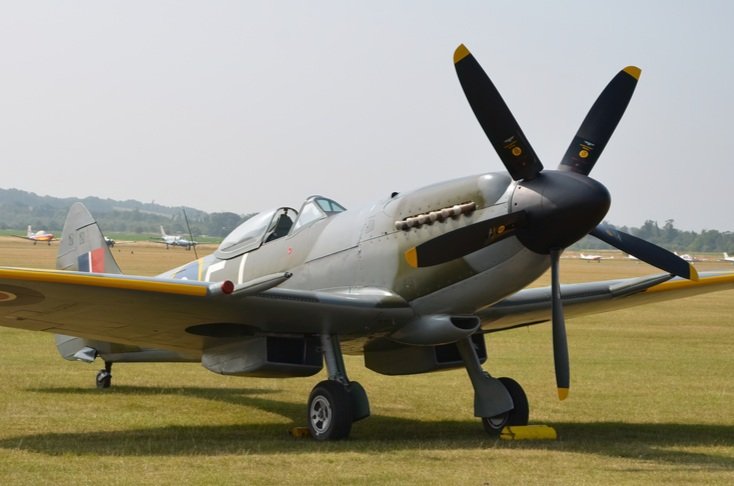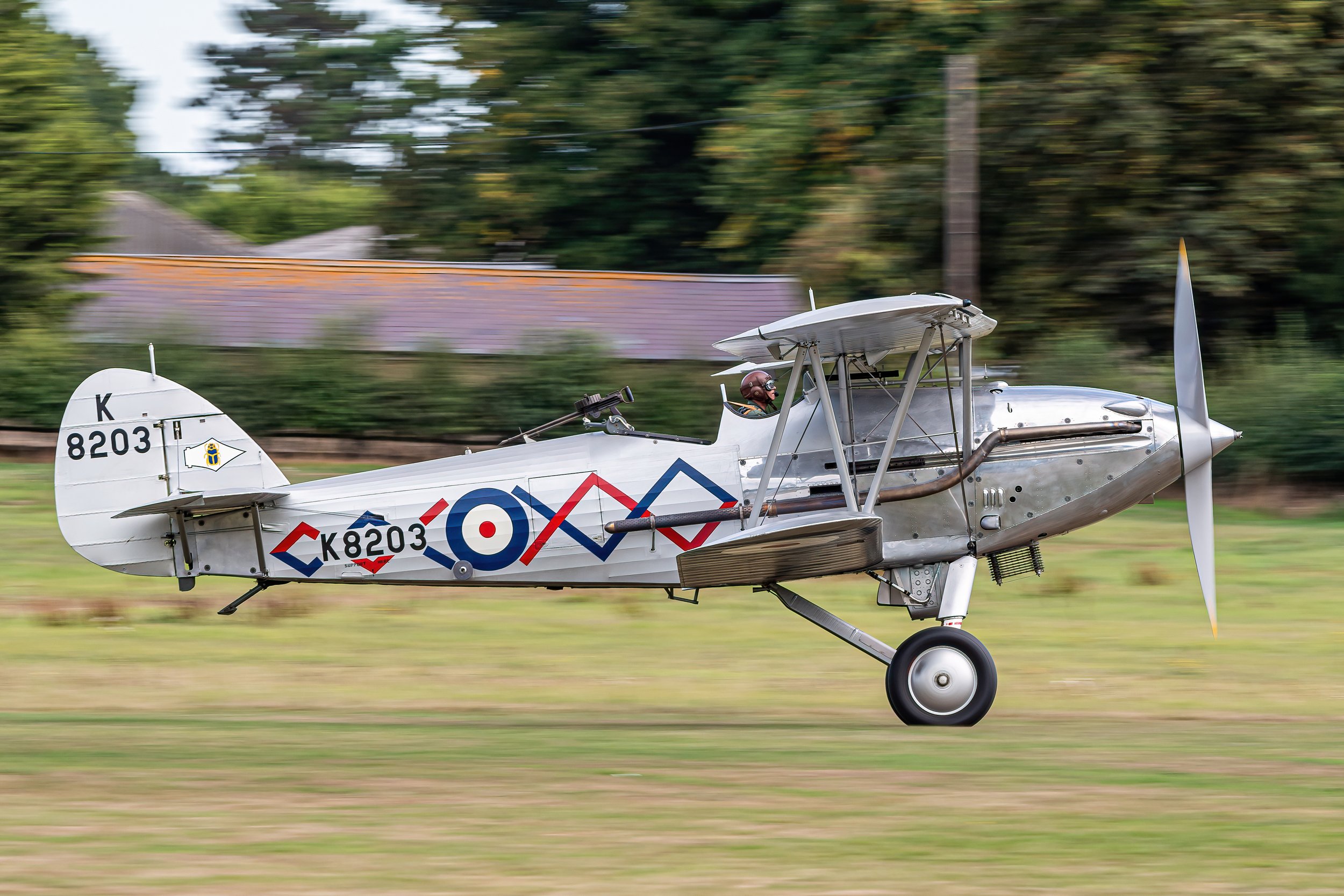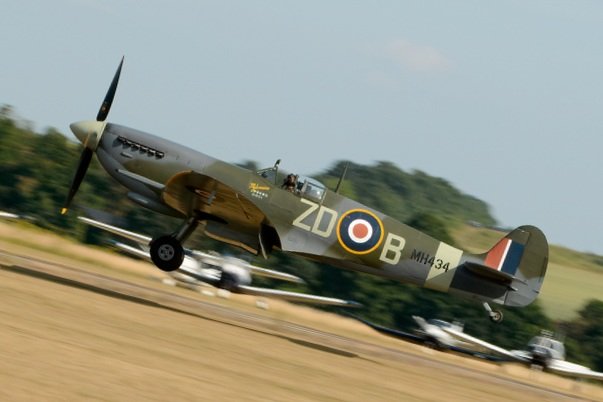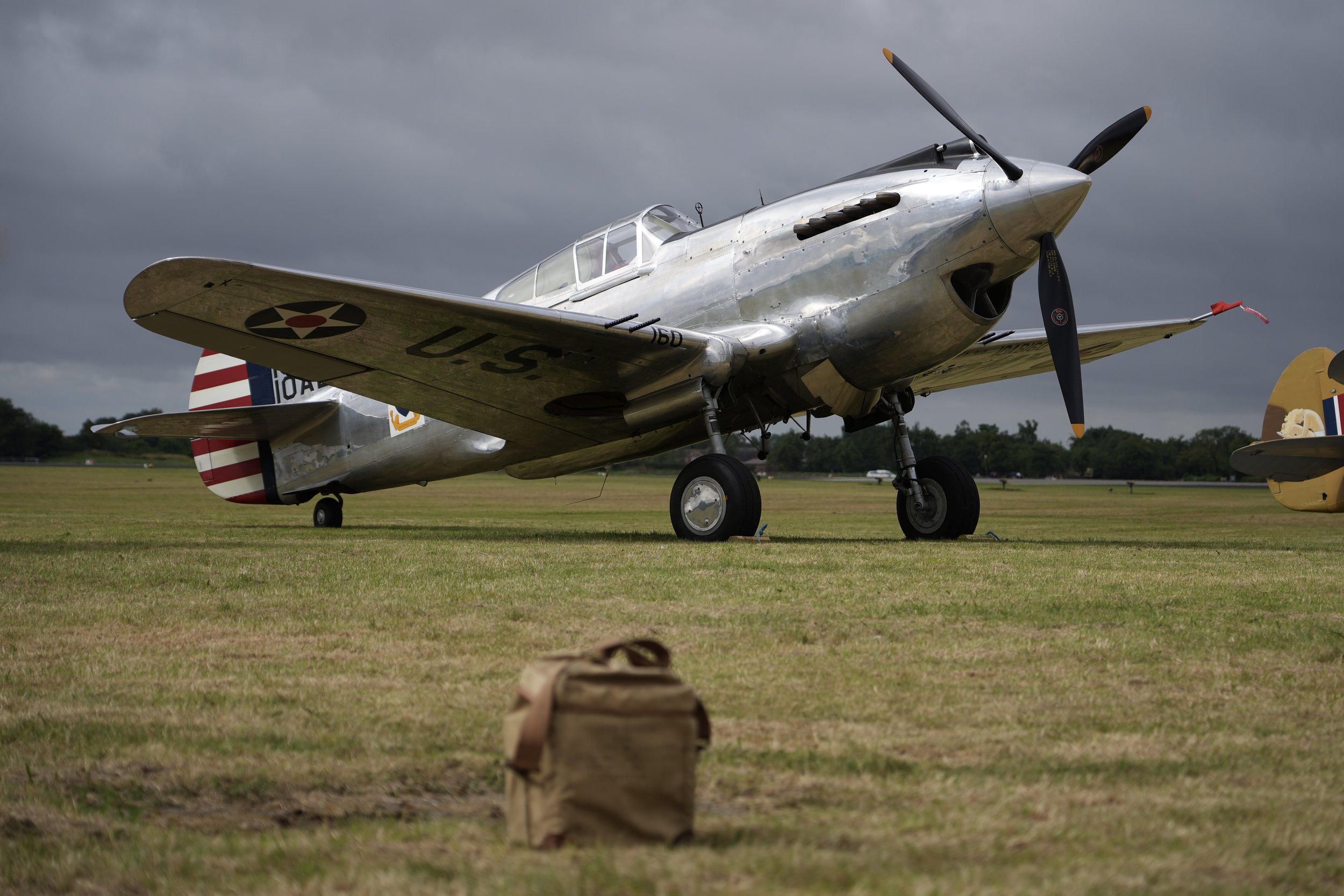Hurricane G-HURI
Year built
1942
Aircraft
Hurricane XIIA
Base
Duxford Airfield
Hurricane Mk XIIa 5711 (G-HURI) was rebuilt in the 1980's from the best original Hurricane parts sourced, in the previous 10 years, from all over Canada. It was given the identity of aircraft CCF c/n 72036 as that aircraft was the source of the airframe used in the rebuild. RCAF 5711 had been built in 1942 by the Canadian Car Foundry as part of their sixth production batch and joined the Royal Canadian Air Force in 1943. It is believed to have served with 123 Squadron at Debert before going to 127 and 129 Squadrons at Dartmouth and onto 1 Operational Training Unit at Bagotville.
It made its first post-restoration flight in 1989 painted in RAF markings as Z3781 coded XR-T of No 71 Eagle Sqdn. Historic Aircraft Collection acquired the Hurricane in 2002 and after undergoing an 18 month extensive programme of repairs and maintenance the Hurricane reappeared in an entirely new paint scheme for 2004, Z5140 coded HA-C of No 126 Sqdn the paint scheme that was worn by a Gloster-built Hurricane IIB, flown with 126 Squadron during the siege of Malta.
In September 2005 Hurricane Z5140 became the first Hurricane to return to the Mediterranean island of Malta since the Second World War. It flew there together with Spitfire BM597 as part of the Merlins Over Malta project. In August 2012 she flew to Moscow to display in their centenary airshow.
For the 75th anniversary in 2015 of the Battle of Britain and with the support of the Polish Embassy G-HURI has been repainted in the RAF markings as P3700 a Hurricane Mk1, coded RF-E of No 303 (Polish) Sqdn. P3700 was abandoned by Sgt Kazimierz Wunsche over Poynings, West Sussex, on 9th September 1940 after sustaining damage from a Bf 109 during combat over Beachy Head.
| Back to Top |
Hawker Hurricane XIIA
The Hawker Hurricane is a British single-seat fighter aircraft of the 1930s–40s that was designed and predominantly built by Hawker Aircraft Ltd. for service with the Royal Air Force (RAF). It was overshadowed in the public consciousness by the Supermarine Spitfire's role during the Battle of Britain in 1940, but the Hurricane inflicted 60 percent of the losses sustained by the Luftwaffe in the engagement and fought in all the major theatres of the Second World War.
The Hurricane originated from discussions between RAF officials and aircraft designer Sir Sydney Camm about a proposed monoplane derivative of the Hawker Fury biplane in the early 1930s. Despite an institutional preference for biplanes and lack of interest from the Air Ministry, Hawker refined their monoplane proposal, incorporating several innovations which became critical to wartime fighter aircraft, including retractable landing gear and the more powerful Rolls-Royce Merlin engine. The Air Ministry ordered Hawker's Interceptor Monoplane in late 1934, and the prototype Hurricane K5083 performed its maiden flight on 6 November 1935.
In June 1936, the Hurricane went into production for the Air Ministry; it entered squadron service on 25 December 1937. Its manufacture and maintenance were eased by using conventional construction methods so that squadrons could perform many major repairs without external support. The Hurricane was rapidly procured prior to the outbreak of the Second World War in September 1939, when the RAF had 18 Hurricane-equipped squadrons in service. The aircraft was relied on to defend against German aircraft operated by the Luftwaffe, including dogfighting with Messerschmitt Bf 109s in multiple theatres of action.
The Hurricane was developed through several versions, into bomber-interceptors, fighter-bombers, and ground support aircraft as well as fighters. Versions designed for the Royal Navy known as the Sea Hurricane had modifications enabling operation from ships. Some were converted as catapult-launched convoy escorts. By the end of production in July 1944, 14,487 Hurricanes had been completed in Britain, Canada, Belgium and Yugoslavia.
Hurricane Mk IV was the last major change to the Hurricane. It included the introduction of the "universal Wing", a single design able to mount two 110 or 230 kg bombs, two 40 mm Vickers S guns, drop tanks or eight "60 pounder" RP-3 rockets. Two 7.7 mm Brownings were fitted to aid the aiming of the heavier armament. Despite persistent reports actually fitted with the same Merlin XX as the mark II. All Merlin 27 were modified to Merlin 25 and used in Mosquitoes, there were only 16 production Merlin 24 by the time over 300 mark IV had been delivered. The individual aircraft cards held by the RAF museum reports the final mark IV had Merlin XX. The radiator was deeper and armoured. Additional armour was also fitted around the engine. 524 was built by Hawker between December 1942 and March 1944.
| Back to Top |

| Back to Top |

































